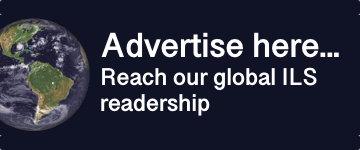The 1% aggregate exceedance probability insured loss (also the 100-year return period loss) from catastrophe events around the globe is now estimated at almost $271 billion by risk modeller AIR Worldwide, the highest level the metric has ever been placed at.
Each year AIR Worldwide reports on global catastrophe exposure and the potential amount of losses that insurance and reinsurance markets could suffer at the main industry metric return periods.
This year, the 1-in-100 year return period loss is pegged at $271 billion, while the 1-in 250 year return period is a huge $342 billion, both the highest levels they have ever been.
At the same time, the modelled global insured average annual loss is estimated at around $86 billion by AIR.
The data provides an insight into where the insurance, reinsurance and of course insurance-linked securities (ILS) industry could expect to see industry losses fall, in the event of a 100 or 250 return period year.
While the average annual global insured loss of around $86 billion seems closely aligned with recent experience.
The latest global aggregate average annual loss (AAL) and exceedance probability loss metrics from AIR feature data gleaned from three new models the firm has introduced this year, European severe thunderstorm, and Southeast European earthquake and flood.
They also reflect the latest changes in risk as a result of updated AIR models, European extratropical cyclone and U.S. Wildfire, as well as updates to AIR’s industry exposure databases for Europe, and the U.S.
“After a decade of below-average losses (apart from 2011 and 2017), 2018 will reinforce the fact that preparing for large losses before they occur is critical to continued solvency and resilience,” explained Rob Newbold, executive vice president, AIR Worldwide.
Adding, “For the insurance industry, the protection gap can spur innovation in product development. In the public sector, governments are recognizing the importance of moving from reactive to proactive risk management, especially in countries where the risk is well known and a risk transfer system is not well established. Understanding the protection gap can help governments assess the risks to their citizens and critical infrastructure, and develop risk-informed emergency management, hazard mitigation, and public risk financing strategies to enhance global resilience and reduce the ultimate costs.”
AIR’s data also shows that despite these 100 and 250 year return period losses being so high, they only make up a portion of the total economic damage that could be expected in such a catastrophe loss year, further underscoring the need for industry work to narrow and close protection gaps around the world.
 View all of our Artemis Live video interviews and subscribe to our podcast.
View all of our Artemis Live video interviews and subscribe to our podcast.
All of our Artemis Live insurance-linked securities (ILS), catastrophe bonds and reinsurance video content and video interviews can be accessed online.
Our Artemis Live podcast can be subscribed to using the typical podcast services providers, including Apple, Google, Spotify and more.































